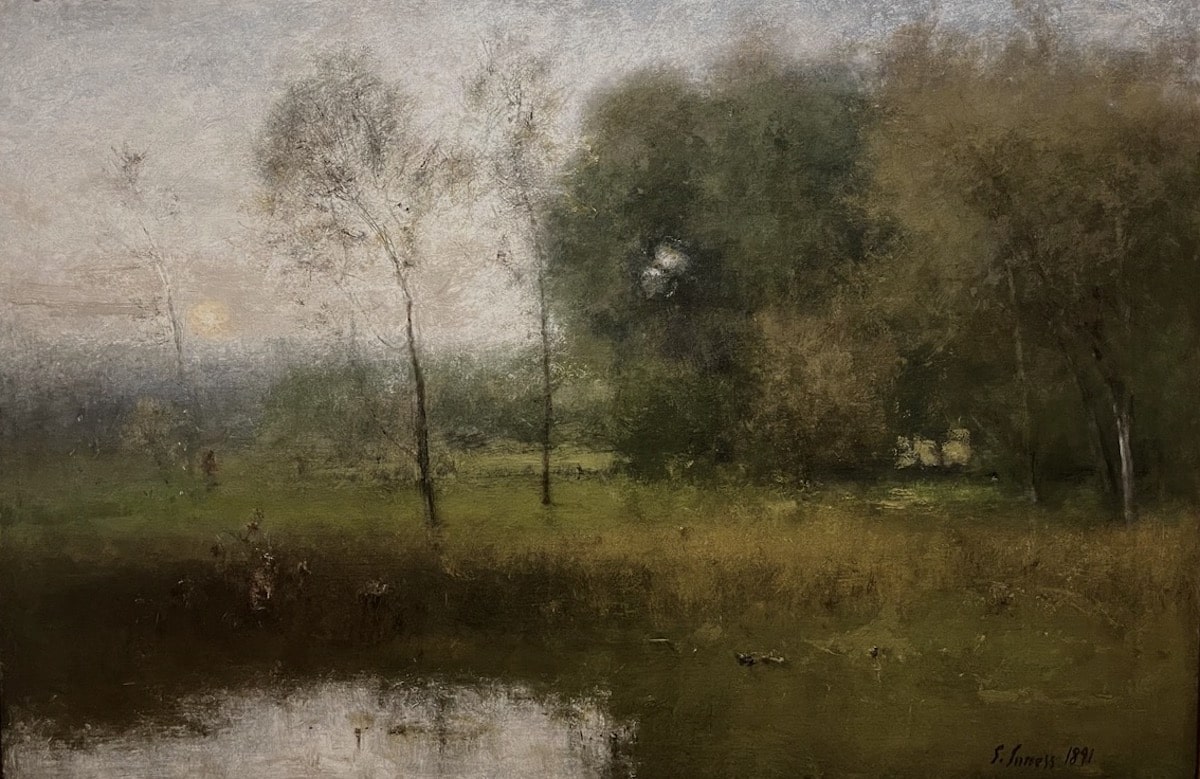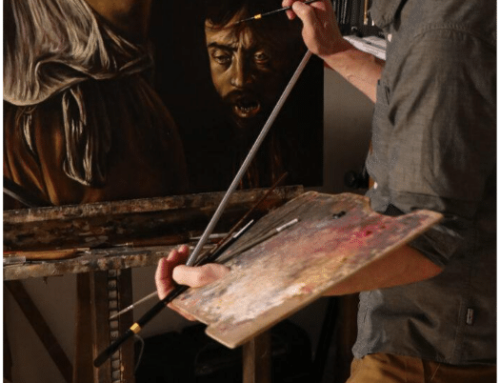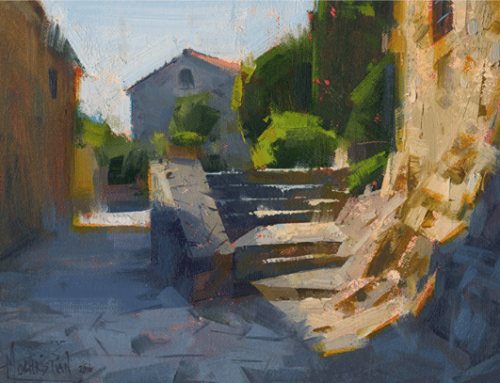“The principle of true art is not to portray, but to evoke.”
-Jerzy Kosiński
Suggestion is much more powerful than detailed rendering. The power of suggestion engages and immerses viewers in your work. It’s like the opposite of over-explaining – leaving something to the imagination evokes a deeper and potentially more meaningful and emotional response.
As far as technique, this comes down to suggesting detail without actually rendering it. You do not have to spend a ton of time painting every little detail. From there, the next question becomes, How much detail do you really need to include at all? The answer, up to each artist, is wide open.
In the painting by Inness above, although the title names a particular location, Inness was less interested in accurate rendering than in conveying nature’s immaterial existence. For Inness, a devotee of the mystic Emanuel Swedenborg, art’s highest purpose was in revealing the natural world visibly suffused with spiritual essence. There’s very little actual detail in “New Jersey Landscape” – a close look at the tree branches reveals they’re little more than scuffs and scribbles. Inness achieved suggestion through finely modulated colors painted with a brush then wiped with a cloth so they blend together without hard contours.
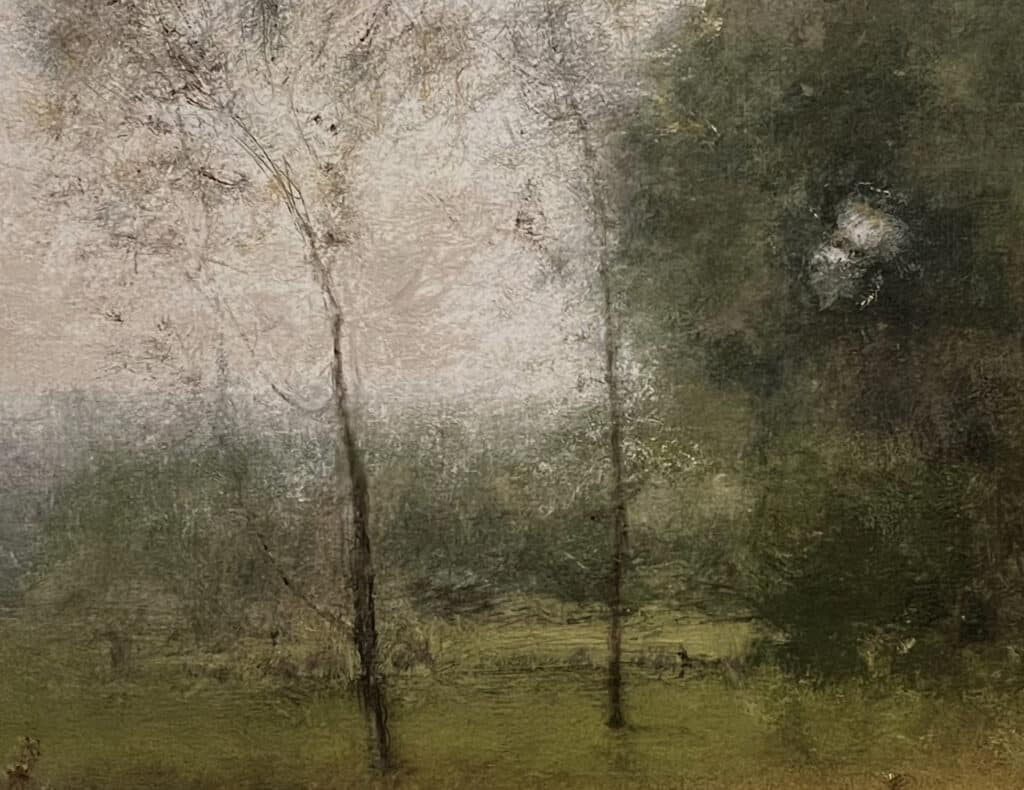
Detail: George Inness, New Jersey Landscape
Using colors, shapes, and gesture (rather than line) to “indicate” branches, foliage, grass, hills, buildings and figures rather than exhaustively describing them in paint leaves it up to the viewer to complete the picture. People will “see” more detailed information than is actually there. It’s a giant step toward the nearly universal goal of becoming a more loose painter, too.
It starts with relieving the paint from its purely descriptive function. When you let the paint be the paint, you open the doors for imagination and expression. There’s a delicious exuberance that comes with giving yourself the freedom to play with colors, marks, layers, and gestures.
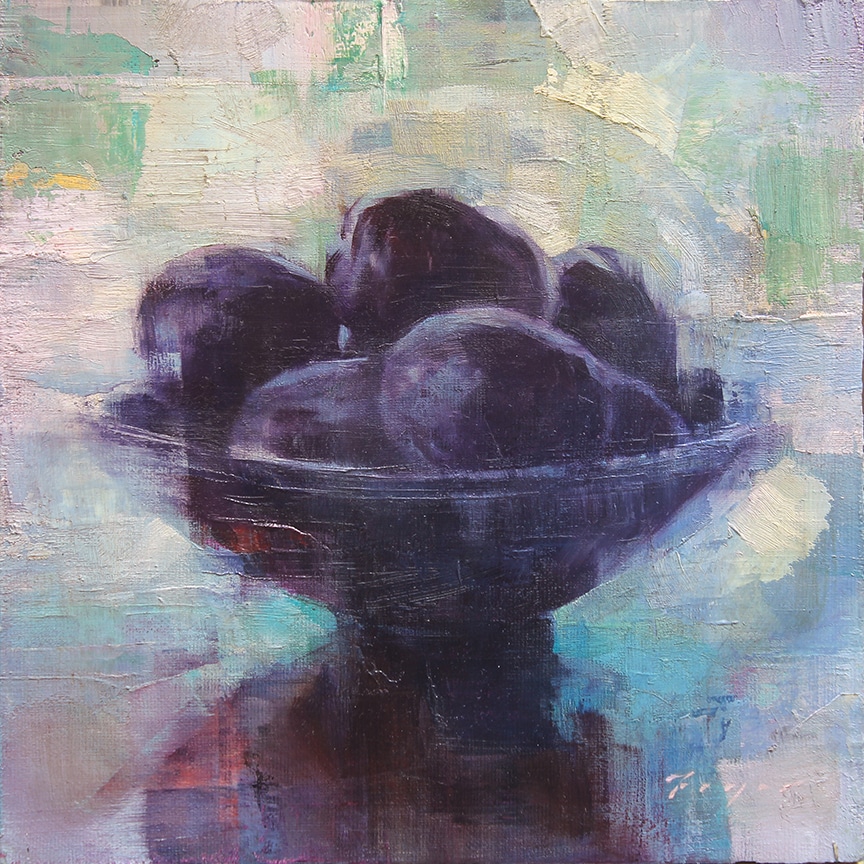
Douglas Fryer, Small Bowl of Plums, 8×8 inches
Changing up the tools – using a bigger brush, a palette knife or a squeegee – anything that makes minute detail impossible! – can be a great way to avoid getting bogged down and fussing over the (literal) small stuff.
It’s also closer to the feeling of being there. When we take in a beautiful vista, the first thing we do NOT do is note tiny details – instead we see “the big picture,” as it were. Same with fruit – as in Douglas Fryer’s Small Bowl of Plums, were you to look at a real bowl of fruit on a table you probably wouldn’t immediately start scrutinizing it for the minutest details – you perceive it all at once, at a glance. Leave out those details, and you’re much more likely to create something that corresponds to an experience.
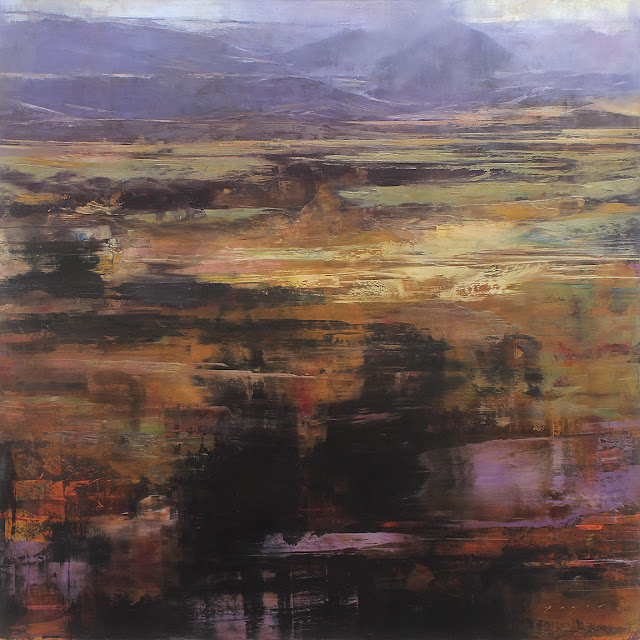
Douglas Fryer, Wasatch Squall, 36″x36″
“Intuitive” painting as Fryer calls it, the kind that enables “full expressive power,” becomes easier once the work’s underlying composition is firmly in place. Fryer demonstrates in
Painting with Intuition how to build an anchoring composition that allows for “the infinite variety you get in simply playing with color and marks and the tools … the combinations are endless.”
——————-
Major Diego Rivera Show Packs a Political Punch
Diego Rivera (1886 – 1957) was a Mexican painter who dedicated his art and life to raising up Mexico’s common people, peasants, and native underclass often in public murals designed to have maximum impact in peoples’ psyches and the world.
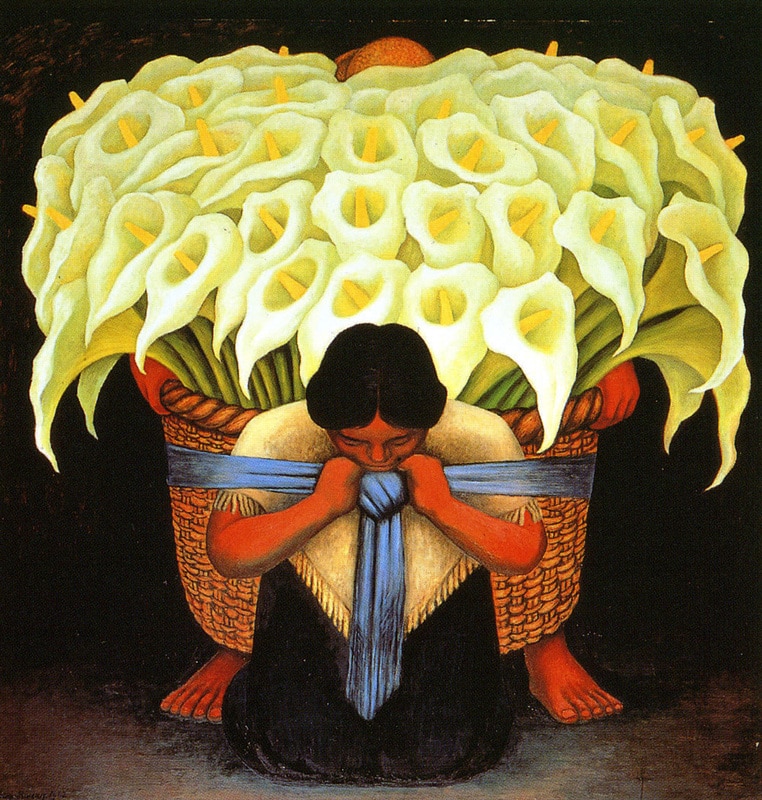
Diego Rivera, The Flower Vendor
Situating Rivera’s genius at the intersection of art, politics, realism and metaphor, Diego Rivera’s America is a vast survey opening at the San Francisco Museum of Modern Art (SFMoMA). The show brings together 150 frescoes, paintings and drawings made between the 1920s and 1940s, when “Rivera and many of his colleagues in Mexico saw art as a weapon for social change,” says the show’s curator James Oles, in this art news piece.





